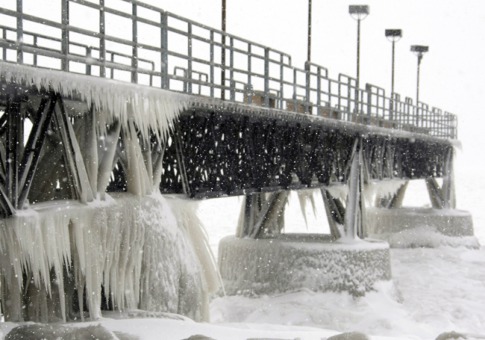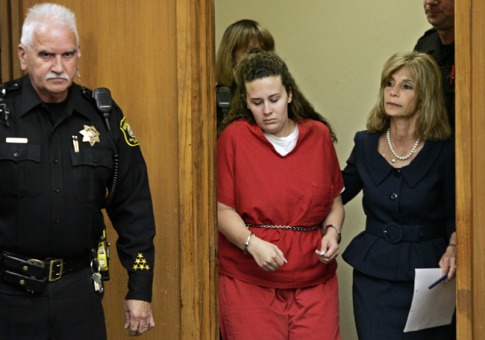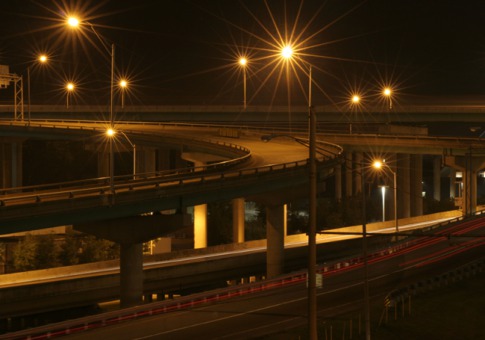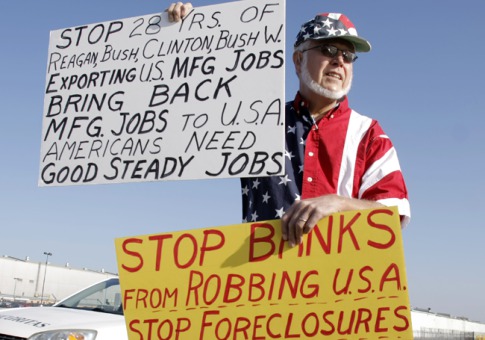Cleveland leads a slew of Midwestern towns on our annual list, but thanks to high taxes New York and Chicago make it too.
The city of Cleveland has had a colorful history. The Cuyahoga River, which runs through the city, famously caught fire in 1969 thanks to rampant pollution, and it wasn’t the first time. In 1978 it became the first U.S. city to default on its debts since the Great Depression. Cleveland sports fans have had to endure more anguish than those in any other city. The city has been dubbed with a less than endearing nickname: the Mistake by the Lake.
This year Cleveland takes the top spot in our third annual ranking of America’s Most Miserable Cities. Cleveland secured the position thanks to its high unemployment, high taxes, lousy weather, corruption by public officials and crummy sports teams (Cavaliers of the NBA excepted).
Misery was on the rise around the country last year. Sure the stock market was up big, but so were unemployment, foreclosures and bankruptcy filings. Meanwhile housing prices, the U.S. dollar and approval ratings for Congress continued their downward spiral.
The widely tracked Misery Index initiated by economist Arthur Okun, which combines unemployment and inflation rates started 2009 at 7.3 and rose to 12.7 by the end of the year thanks to soaring joblessness. That is the highest level since 1983.
Our Misery Measure takes into account unemployment, as well as eight other issues that cause people anguish. The metrics include taxes (both sales and income), commute times, violent crime and how its pro sports teams have fared over the past two years. We also factored in two indexes put together by Portland, Ore., researcher Bert Sperling that gauge weather and Superfund pollution sites. Lastly we considered corruption based on convictions of public officials in each area as tracked by the Public Integrity Section of the U.S. Department of Justice.
We expanded the list of cities under consideration this year to include the 200 largest metropolitan statistical areas (in years past we’ve examined 150), which led to a shuffling in the ranks. Any area with a population of more than 245,000 was eligible.
Cleveland nabbed the top spot as a result of poor ratings across the board. It was the only city that fell in the bottom half of the rankings in all nine categories. Many residents are heading for greener pastures. There has been a net migration out of the Cleveland metro area of 71,000 people over the past five years. Population for the city itself has been on a steady decline and is now less than half of it what it was 50 years ago.
Cleveland ranked near the bottom when looking at corruption. Northern Ohio has seen 309 public officials convicted of crimes over the past 10 years according to the Justice Department. A current FBI investigation of public officials in Cuyahoga County (where Cleveland is located) has ensnared more than two dozen government employees and businessmen on charges including bribery, fraud and tax evasion.
On the housing front Cleveland is dealing with thousands of abandoned homes. The city contributed to its foreclosure problem by providing down payments to many people that could not afford homes through the federally funded Afford-A-Home program. Cleveland led by Mayor Frank Jackson sued 21 large investment banks in 2008 who he felt were complicit in the subprime and foreclosure crisis that hit Cleveland hard. A federal judge dismissed the suit last year, but the city is appealing the ruling.
A 19% decline in foreclosures last year is possibly a glimmer of hope that the housing situation is starting to improve, although Cleveland still ranks in the top third of all metros for foreclosure rates according to RealtyTrac, an online marketer of foreclosed property. Cleveland and Cuyahoga County were awarded $41 million last month from the Department of Housing and Urban Development. This money will go towards demolition of homes, foreclosure prevention and the rehabilitation of homes.
There are certainly bright spots in Cleveland. Downtown has experienced a revival over the past 15 years helped in part by the construction of three new sports venues for the city’s NFL, NBA and baseball teams. The Cleveland Clinic is one of the top medical centers in the U.S. and the largest employer in northeast Ohio.
Mayor Jackson’s chief of staff Ken Silliman calls 2010 a very exciting year for Cleveland. He points to three projects in development for the city. The first is the Cleveland Medical Mart which is a convention center that targets the medical and health care industries. Next is a casino plan. In November Ohio voters approved casinos in four cities, and Cavaliers owner Dan Gilbert is leading a group that hopes to have a Cleveland casino up and running in three years. Lastly is the Flats East Bank project, which ran into funding issues during the financial crisis. The waterfront development will include an office tower, hotel and space for retail and dining.
“Clevelanders over the years have developed a tenacity to deal with these kinds of situations, and we are very aggressive in attempting to solve our problems rather than awaiting someone else’s solutions,” says Silliman.
Other cities on the list include Memphis, which came in third thanks to the second-worst rate of violent crime in the U.S. and an alarming rate of convicted public officials. Detroit, ravaged by the ailing auto industry was forth. Flint, Mich., was fifth. Also on the list? Chicago (No. 10) and New York City (No. 16). Torturous commute times and nosebleed-inducing taxes are the high prices locals pay for the cultural opportunities and corporate headquarters located there.
Our most miserable city last year, Stockton, Calif., nabbed the second spot on this year’s list. Unemployment and crime continue to be major issues. Stockton ranked seventh worst in both of these areas. Stockton residents have average commutes that are among the highest in the country and, like all Californians, they suffer from onerous sales and income taxes.
Stockton Mayor Ann Johnston says the city is working to fix its problems. It has seen a reduction in crime in recent months as it targets troubled areas with an increased police presence. On the economic front, the city recently expanded the Port of Stockton, which it hopes will attract new companies. Stockton is an agricultural community, but the Mayor says the city is working to diversify its economic base and echoes Silliman’s comments about Cleveland. “We’re an All-American city,” says Mayor Johnston. “And it’s not because we sit on our hands and do nothing. It’s because we recognize our problems and work to solve them.”
America’s Top 5 Most Miserable Cities
No. 1 Cleveland, Ohio
Residents of the Mistake by the Lake endure brutal winters, high crime and a tortured sports history. They are voting with their feet as the net migration out of the metro area was 71,000 over the past five years.

No. 2 Stockton, Calif.
Stockton relinquished its most miserable city crown to Cleveland this year, but the city still faces jarring unemployment and violent crime. Unemployment is expected to average 18.5% in the metro area this year.

No. 3 Memphis, Tenn.
Violent crime is second worst in the country and public officials are getting locked up at an alarming rate. On a positive note, the city’s sole pro sport franchise, the NBA’s Grizzlies, is winning some games after losing 72% of the time the past three seasons.

No. 4 Detroit, Mich.
Thousands of homes in this ravaged city were available for less than $10,000 last year. After shrinking for six straight years (including 9% in 2009), Detroit’s economy is actually expected to expand in 2010.

No. 5 Flint, Mich.
The city of Flint is buying up houses and demolishing them in an effort to shrink the size of the city to a sustainable level. The area received $25 million in stimulus funds from the federal government to help with the plan.

Did you know that if you subscribe to our website, you will receive email notifications whenever content changes or new content is added.
1. Enter your e-mail address below and click the Sign Me Up button.
2. You will receive an email asking you to confirm your intention of subscribing to our site.
3. Click the link in the email to confirm. That’s all there is to it! Note: if you wish to unsubscribe from our site, click the unsubscribe link at the bottom of the email you received.
Then indicate you no longer wish to receive our emails.
Thank You
Prisonbreakfreak.com Team